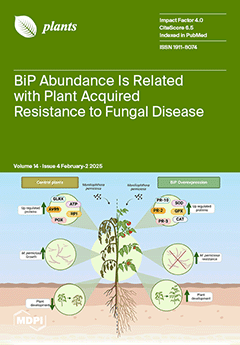Ver ítem
- xmlui.general.dspace_homeCentros Regionales y EEAsCentro Regional Mendoza - San JuanEEA MendozaArtículos científicosxmlui.ArtifactBrowser.ItemViewer.trail
- Inicio
- Centros Regionales y EEAs
- Centro Regional Mendoza - San Juan
- EEA Mendoza
- Artículos científicos
- Ver ítem
Characterization of a diverse okra (Abelmoschus esculentus L. Moench) germplasm collection based on fruit quality traits
Resumen
Okra is an important dietary component of many Asian countries, providing high levels of dietary fiber, phytonutrients (e.g., antioxidant vitamins and pigments), and essential minerals. Evaluation of okra germplasm collections can improve the curation
of genebanks and help identify superior materials for breeding. In this study, 66 okra accessions from diverse geographical origins were characterized based on fruit quality traits, including fruit fresh
[ver mas...]
Okra is an important dietary component of many Asian countries, providing high levels of dietary fiber, phytonutrients (e.g., antioxidant vitamins and pigments), and essential minerals. Evaluation of okra germplasm collections can improve the curation
of genebanks and help identify superior materials for breeding. In this study, 66 okra accessions from diverse geographical origins were characterized based on fruit quality traits, including fruit fresh (FFW) and dry weights (FDW), dry matter (DM), diameter,
length, and diameter of the fruit peduncle; concentration of vitamin C, chlorophyll a and
b, and total chlorophyll; and color-chroma values. Significant (p < 0.05) and substantial variation was found among the accessions for all traits. Mean FFW and FDW varied nearly three-fold, with ranges of 3.76–9.99 g and 0.43–1.34 g, respectively, with a range in DM content of 10.5–19.4%. Vitamin C and total chlorophyll content varied 6.4- and 8.3-fold, with ranges of 12.8–82.8 and 1.07–8.91 mg/100 g fw, respectively, with substantial variation also observed in chlorophyll composition. Significant positive correlations were found between vitamin C and total and subtypes of chlorophyll levels (r = 0.29–0.32), whereas the strongest correlations were between FFW and FDW (r = 0.88) and between total chlorophyll
and chlorophyll subtypes a and b (r = 0.90–0.95). Additionally, a dendrogram constructed based on these phenotypic data grouped the accessions in general agreement with their geographical origins and fruit traits. Overall, our results revealed broad phenotypic diversity in the evaluated germplasm, which is exploitable in okra breeding programs aimed at increasing fruit quality and nutraceutical value.
[Cerrar]

Autor
Yıldız, Mehtap;
Sirke, Sibel Turan;
Koçak, Metin;
Mancak, Ibrahim;
Özkaya, Aslıhan Agar;
Abak, Kazım;
Özkaya, Okan;
Cavagnaro, Pablo;
Fuente
Plants 14 (4) : 565 (February 2025)
Fecha
2025-02
Editorial
MDPI
ISSN
2223-7747
Formato
pdf
Tipo de documento
artículo
Palabras Claves
Derechos de acceso
Abierto
 Excepto donde se diga explicitamente, este item se publica bajo la siguiente descripción: Creative Commons Attribution-NonCommercial-ShareAlike 2.5 Unported (CC BY-NC-SA 2.5)
Excepto donde se diga explicitamente, este item se publica bajo la siguiente descripción: Creative Commons Attribution-NonCommercial-ShareAlike 2.5 Unported (CC BY-NC-SA 2.5)


